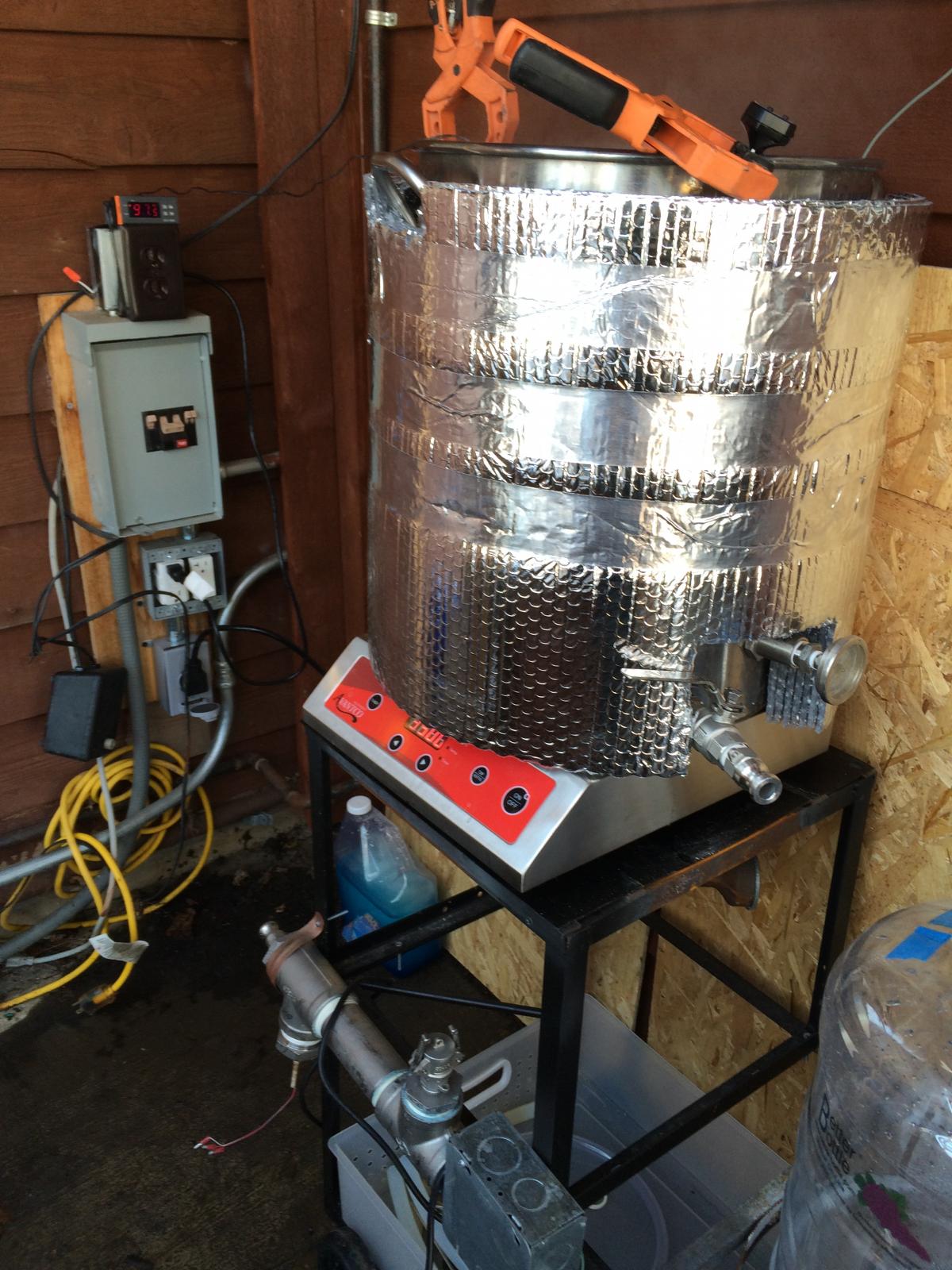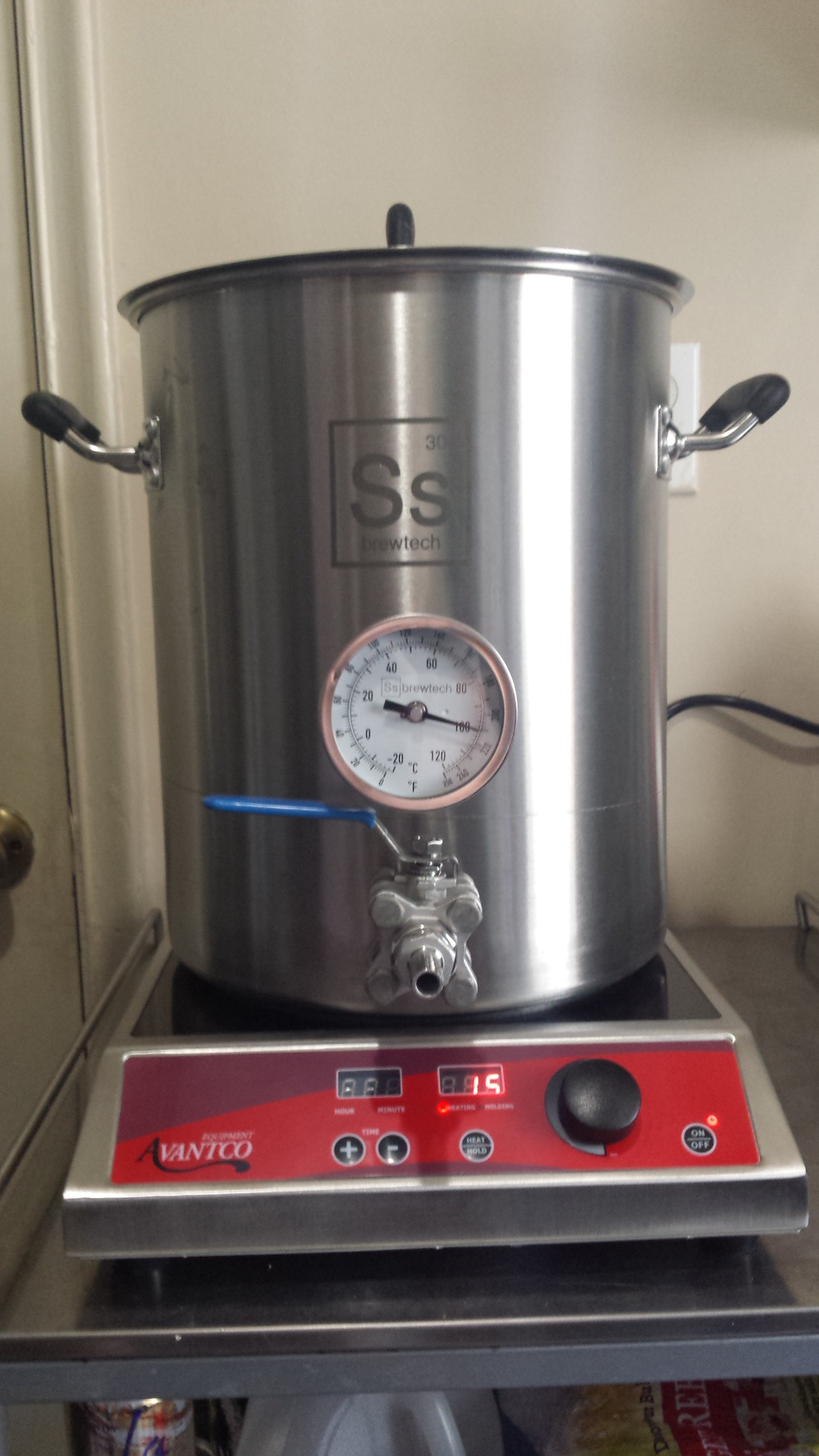Well, 11 days late is better than never. Here's the test with 8.5 gallons of water, from 62 degrees to boiling. I decided to use 8.5 gallons as a test because in all likelihood, that's roughly where my BIAB volumes should be.
This is with two wraps of Reflectix on the sides of the kettle, and a single layer on the lid. The lid seal wasn't perfect as I was using small binder clips to hold the reflectix in place and that wouldn't let the lid sit all the way down but I don't think there's a huge difference to be had. That being said, I have used gorilla packing tape to secure the reflectix to the lid and it'll sit flush now.
Time, Temp, Rate
0, 62
10, 85, 2.3
20, 108, 2.3
30, 131, 2.3
40, 153, 2.2
50, 174, 2.1
60, 194, 2.0
70, 212, 1.8
With the insulation, 1.5 gallons more volume, and a colder starting temp, I hit boil in 70 minutes. Was able to throttle the plate back more and keep a good rolling boil. Given that this was able to boil 8.5 gallons of water I'm now convinced that 10 gallon batches are indeed possible with this plate using a tall, narrow kettle and decent insulation.
And, because I had the hot water there and I was curious how the insulation would work at mash temps, I replaced some of the water with cooler water to hit 152.
Time, Temp
0, 152
15, 152
30, 151
45, 150
60, 150
A 2 degree drop over 60 minutes is fine, as far as I'm concerned. It's no big deal to fire up the plate and stir at the 30 minute mark if I'm really hell bent on keeping mash temps nailed down.
Now, if only my new counter-flow chiller would show up, I could *really* finish my stand...






